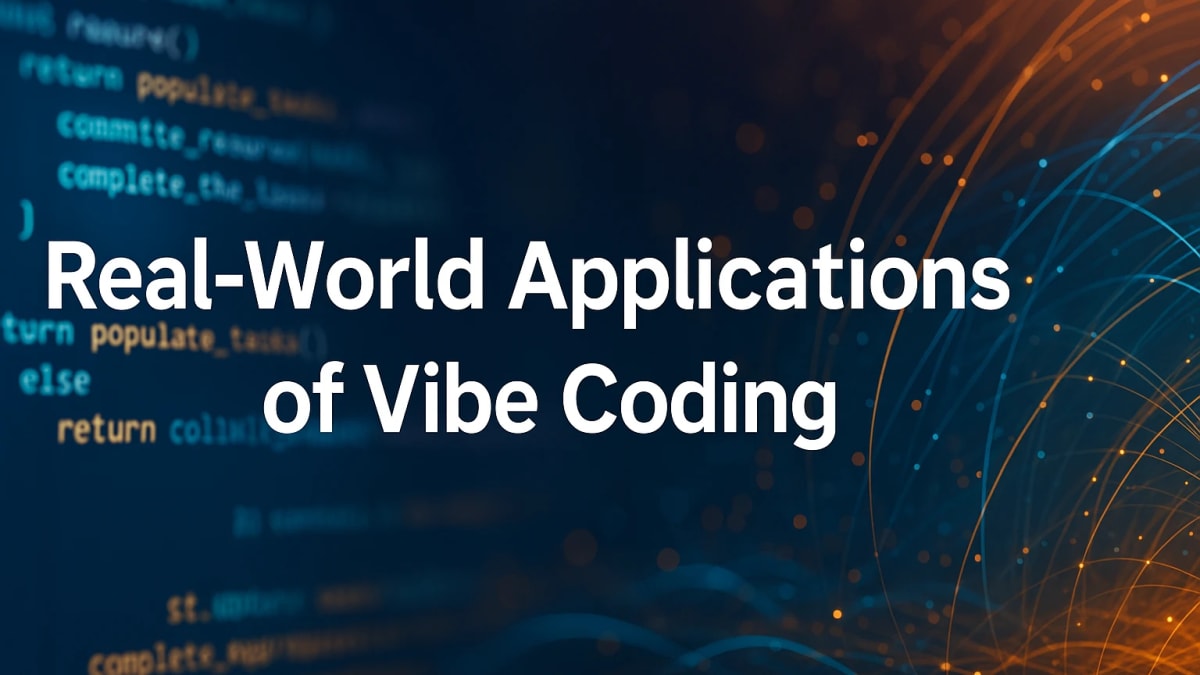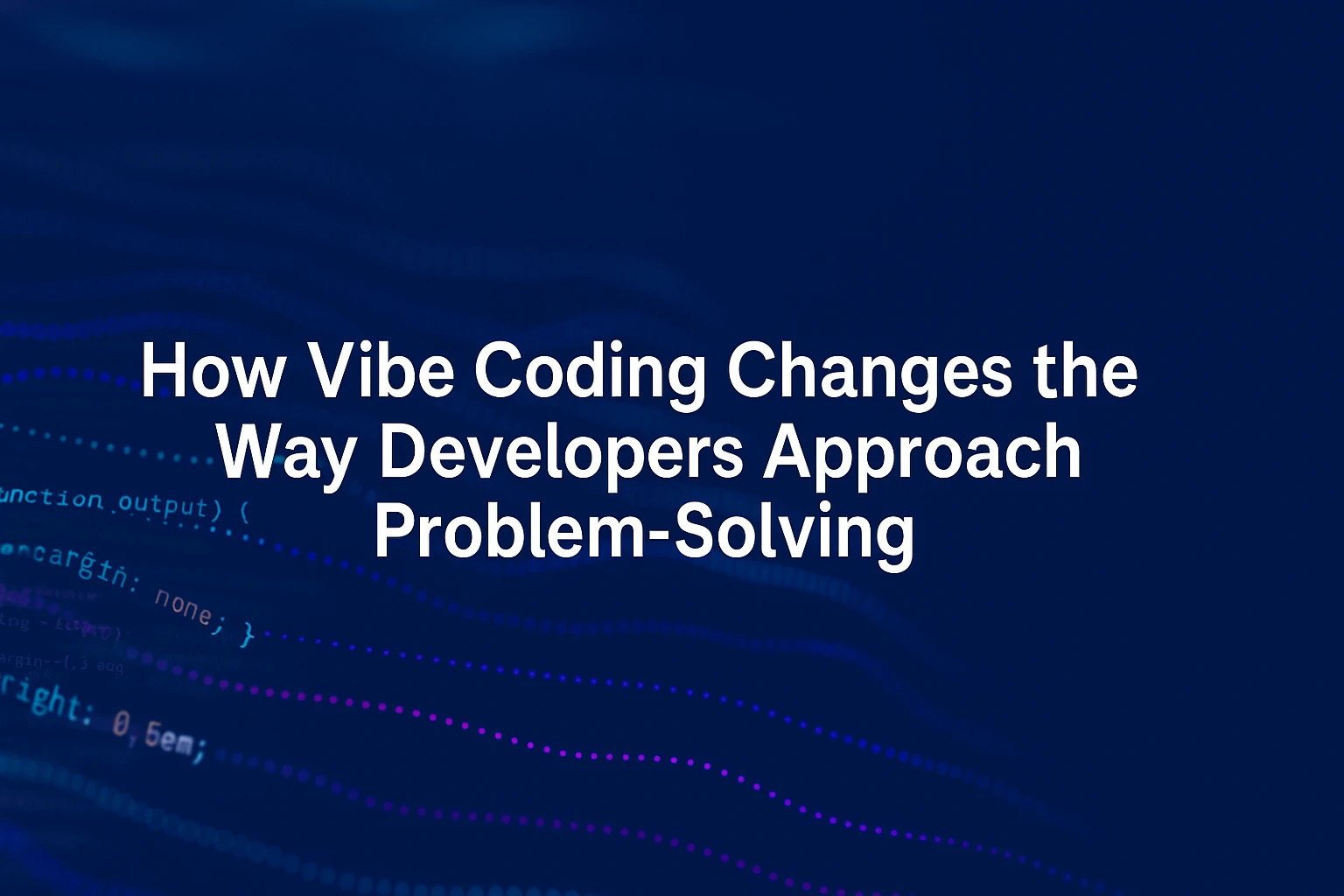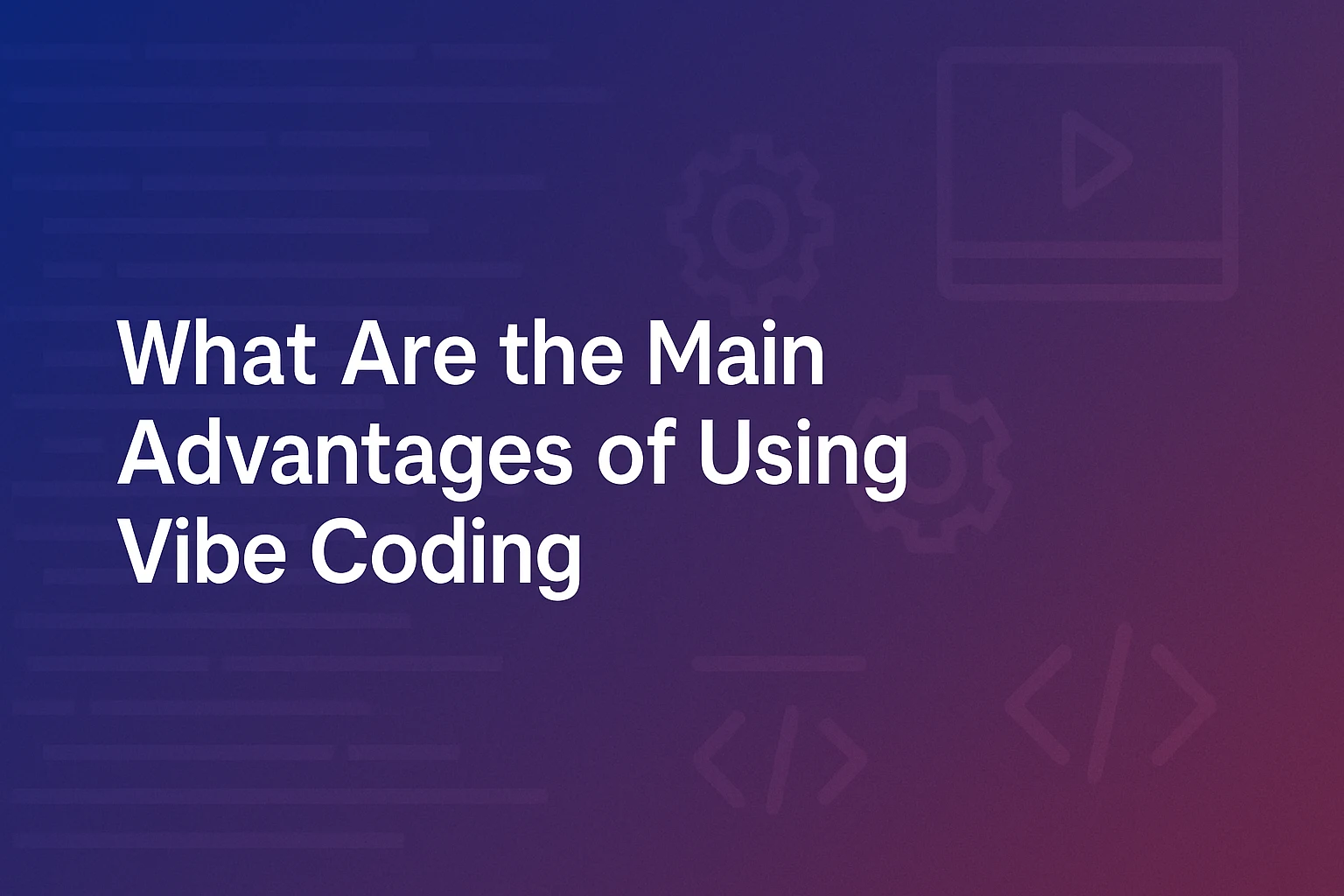What Are Some Real-World Applications of Vibe Coding

Introduction to Vibe Coding and Its Practical Utility
Vibe coding has emerged as a groundbreaking approach in the software development landscape. By integrating intuitive coding patterns, collaborative development models, and AI-assisted code generation, vibe coding is revolutionizing industries across the globe. This technique encourages seamless communication between code, developer, and end-user, thereby increasing efficiency, productivity, and innovation.
Vibe Coding in Web Development
Vibe coding is reshaping modern web development by streamlining the design of interactive web applications. Developers utilize real-time code feedback to enhance user experiences and deploy responsive designs faster. With vibe coding, teams build progressive web apps (PWAs) and single-page applications (SPAs) that cater to diverse business needs. The flexibility of vibe coding enables modular architecture, allowing easy scaling of web solutions.
Enhancing Mobile App Development
In mobile development, vibe coding bridges the gap between frontend aesthetics and backend functionality. The integration of vibe coding practices results in faster prototyping of cross-platform applications using frameworks like Flutter and React Native. Developers can implement live coding sessions, reducing deployment cycles and improving error detection in real time. This leads to robust apps with optimized performance and lower maintenance costs.
Vibe Coding in Game Development
Game developers benefit significantly from vibe coding as it encourages dynamic collaboration between designers, artists, and programmers. Through vibe coding environments, teams create immersive gaming experiences with real-time testing and debugging. The approach facilitates procedural content generation, allowing for expansive game worlds without intensive manual coding. Moreover, vibe coding aligns with agile development methodologies, ensuring faster iterations and updates.
AI-Powered Software Solutions
Vibe coding supports the development of AI-driven applications by enabling seamless integration with machine learning models and data pipelines. Developers can build smart assistants, predictive analytics tools, and recommendation systems with fewer code errors and enhanced interpretability. The iterative vibe coding process ensures quick validation of AI model outputs, helping teams align technology with business goals.
Applications in IoT (Internet of Things)
Vibe coding accelerates the development of IoT ecosystems, connecting hardware devices with cloud services. The approach simplifies writing firmware for smart sensors, wearable devices, and industrial equipment. By leveraging real-time collaboration tools, teams can coordinate on embedded systems programming and integrate with IoT platforms like AWS IoT and Azure IoT Hub. This leads to faster deployment of connected solutions.
Vibe Coding for Blockchain and Web3
Blockchain developers are adopting vibe coding to build decentralized applications (dApps) and smart contracts efficiently. The method allows for collaborative auditing of smart contract code, ensuring security and compliance. Vibe coding tools integrate with blockchain frameworks like Ethereum, Solana, and Polkadot, supporting the rapid creation of NFT marketplaces, DeFi platforms, and DAO infrastructures.
Boosting Cybersecurity Applications
Security software development greatly benefits from vibe coding's emphasis on collaborative review and iterative testing. Teams can create intrusion detection systems, firewall solutions, and encryption services with continuous feedback mechanisms, reducing vulnerabilities early in the lifecycle. Vibe coding enables the creation of adaptive security solutions that evolve with emerging threats.
Vibe Coding in Data Science and Big Data
Data scientists apply vibe coding techniques when designing data pipelines, ETL processes, and visualization dashboards. The collaborative environment promotes code reusability and pipeline automation, enhancing the efficiency of data workflows. With vibe coding, teams can build scalable solutions for real-time analytics, business intelligence, and data-driven decision-making.
Automation and DevOps Pipelines
Vibe coding streamlines the creation of CI/CD pipelines, infrastructure-as-code (IaC) scripts, and automation frameworks. By embedding real-time code validation and collaborative scripting, teams ensure faster deployment cycles and error-free releases. Vibe coding supports container orchestration tools like Kubernetes and Docker, making it ideal for DevOps environments.
Use in Augmented Reality (AR) and Virtual Reality (VR)
Vibe coding facilitates the development of AR/VR applications by enabling tight integration between 3D modeling, interaction scripting, and hardware optimization. Developers can prototype immersive experiences, test hardware compatibility, and refine interactions rapidly. This accelerates the release of educational AR tools, VR training simulators, and interactive entertainment solutions.
Educational Technology Applications
In edtech, vibe coding empowers the creation of interactive learning platforms, coding simulators, and virtual classrooms. The collaborative nature of vibe coding ensures that developers and educators can work together to design features that promote engagement, inclusivity, and adaptive learning. Tools built with vibe coding principles support gamified learning experiences and personalized learning paths.
Smart City and Urban Planning Tools
Urban developers apply vibe coding to build simulation models, resource optimization tools, and smart city management platforms. The code's adaptability allows planners to incorporate sensor data, geospatial analytics, and predictive models in real time. Vibe coding accelerates the deployment of intelligent transportation systems, energy-efficient grids, and public safety networks.
Healthcare and Medical Software
Healthcare software solutions leverage vibe coding to develop telemedicine platforms, patient management systems, and AI diagnostic tools. The method supports compliance with healthcare regulations, ensuring that code meets strict privacy and security requirements. Vibe coding facilitates the integration of electronic health records (EHR) and clinical decision support systems.
Conclusion
Vibe coding is transforming industries by promoting collaboration, efficiency, and innovation. From web and mobile development to AI, IoT, and beyond, its applications are vast and impactful.

Deepak
Vibe Coder specializing in AI-powered development and software architecture.

